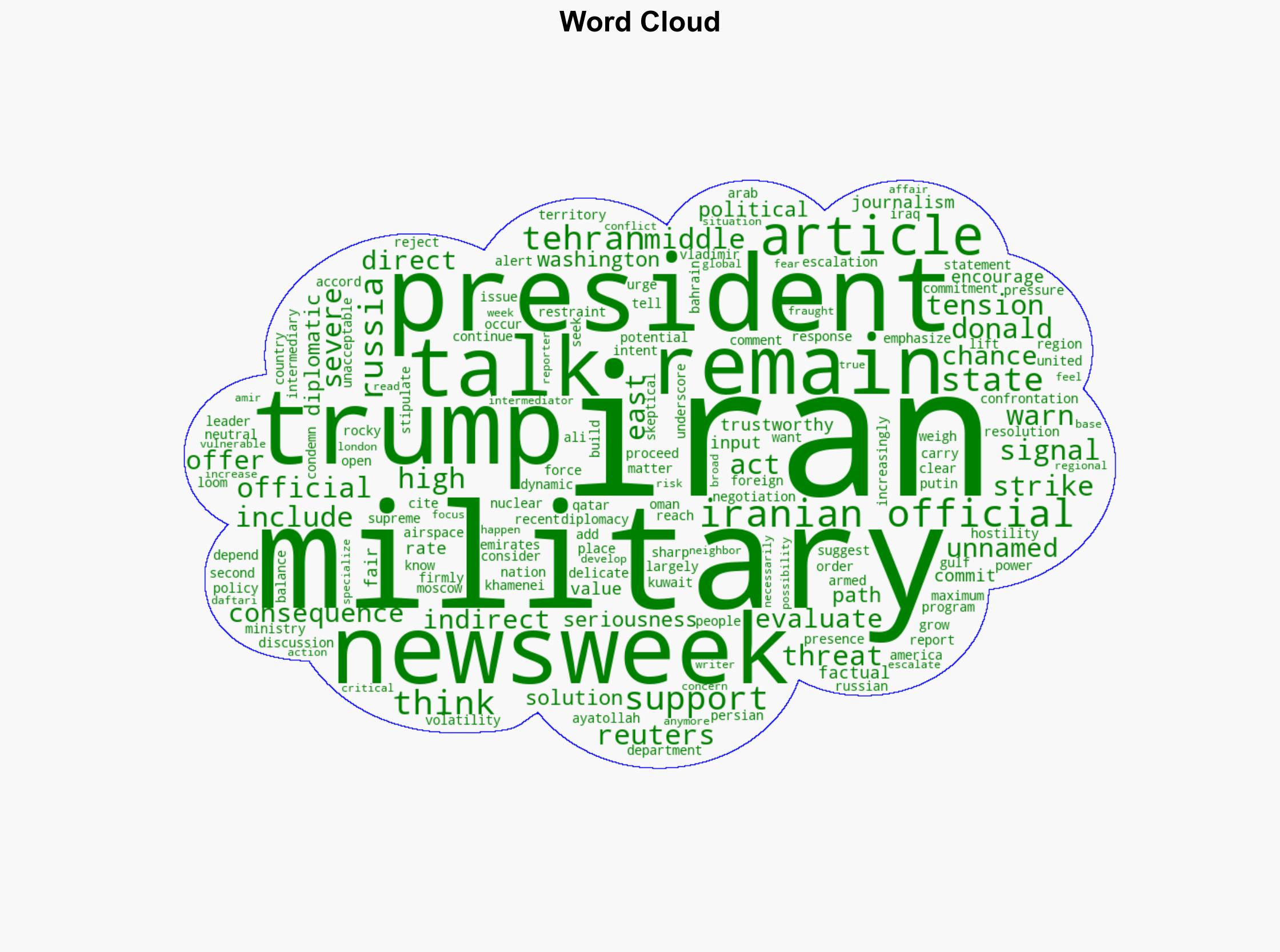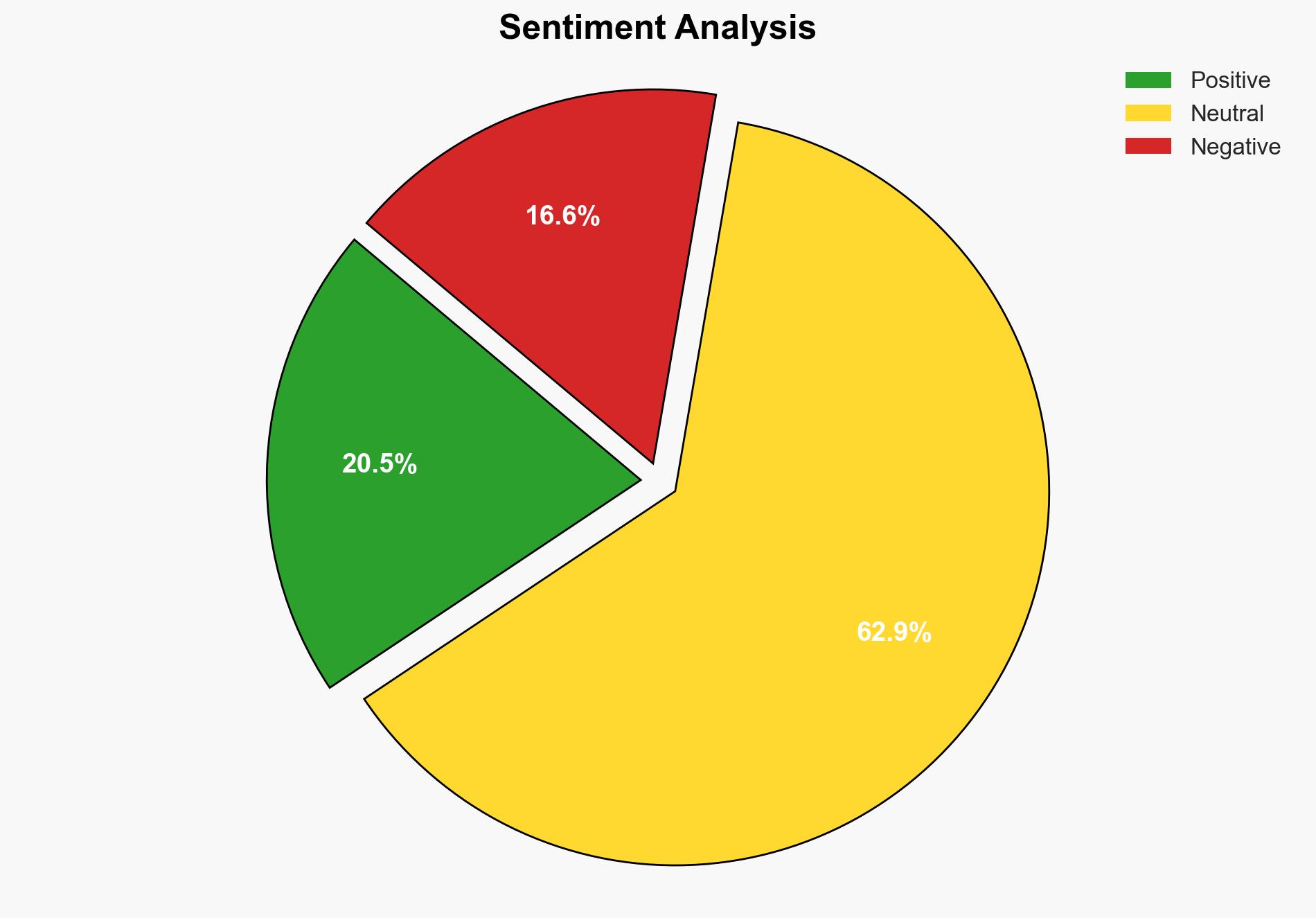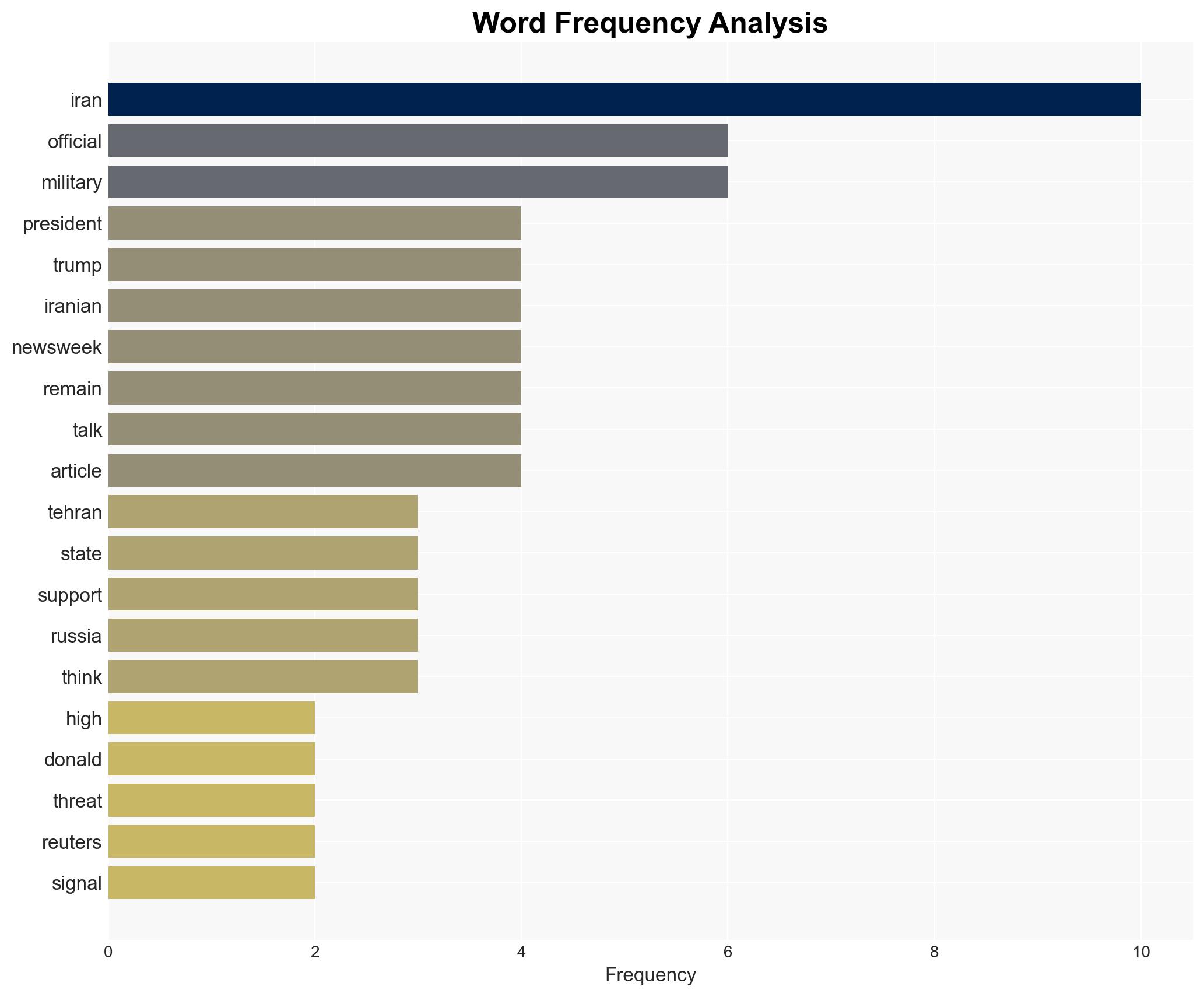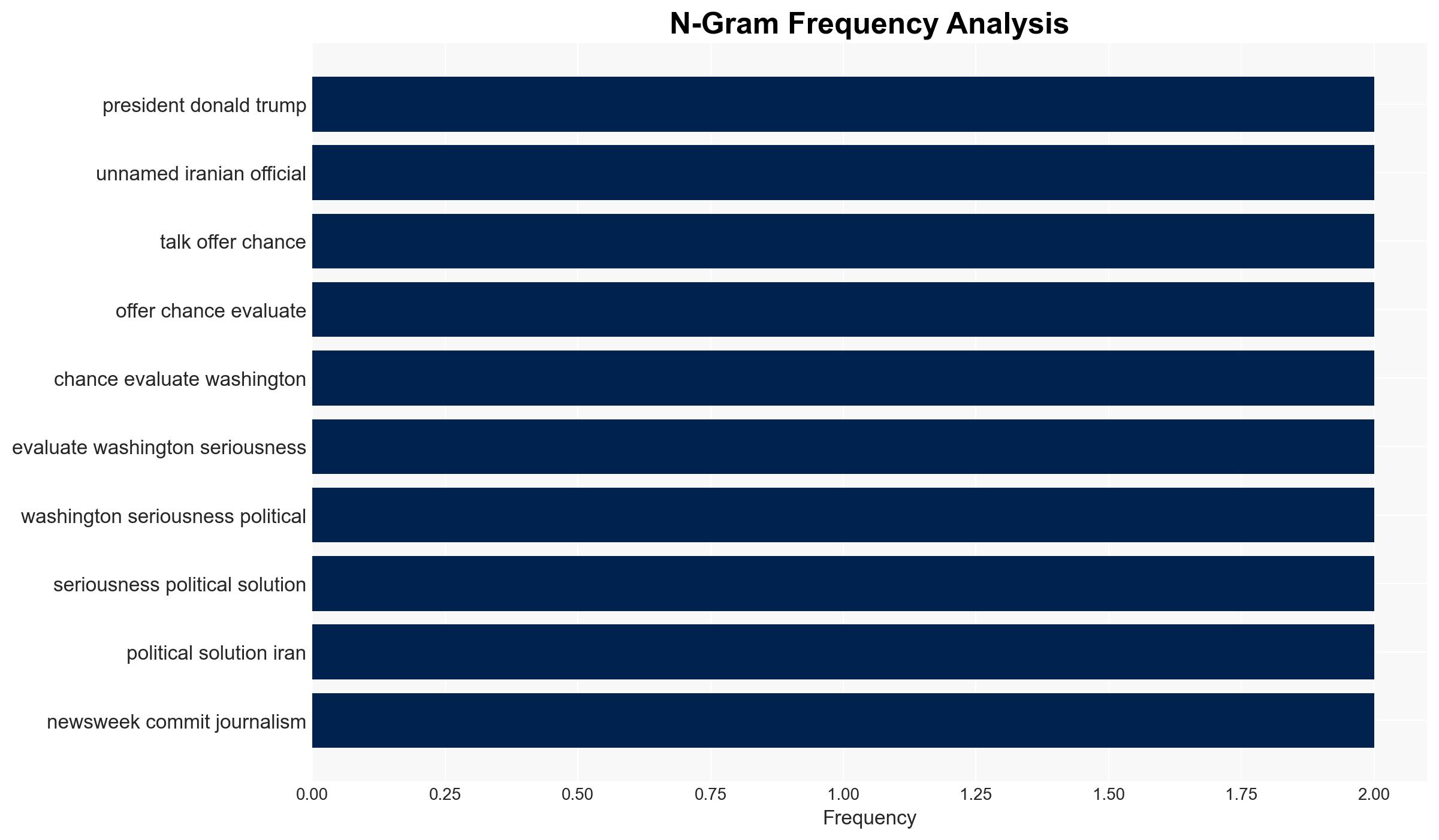Iran Puts Army on High Alert Over US Threats Report – Newsweek
Published on: 2025-04-07
Intelligence Report: Iran Puts Army on High Alert Over US Threats Report – Newsweek
1. BLUF (Bottom Line Up Front)
Iran has placed its armed forces on high alert in response to perceived threats from the United States. This development signals a significant escalation in tensions between the two nations, with potential military confrontation looming. The situation is further complicated by Iran’s rejection of direct negotiations on its nuclear program, although it remains open to indirect talks through intermediaries. The regional stability is at risk, and immediate diplomatic efforts are necessary to prevent further escalation.
2. Detailed Analysis
The following structured analytic techniques have been applied for this analysis:
General Analysis
Recent threats from the United States have prompted Iran to increase its military readiness. The heightened alert status reflects Iran’s strategic posture in response to the growing military presence of the United States in the Middle East. Iran’s warning to its regional neighbors underscores the potential for a broader conflict, as any military action could have severe consequences. The involvement of Russia as a potential supporter of Iran adds complexity to the geopolitical dynamics, with skepticism about Russia’s commitment to Iran’s cause.
3. Implications and Strategic Risks
The current situation poses several strategic risks, including:
- Increased likelihood of military confrontation between Iran and the United States.
- Potential destabilization of the Middle East region, affecting countries such as Iraq, Kuwait, the United Arab Emirates, Qatar, and Bahrain.
- Disruption of global oil markets due to potential conflict in the Persian Gulf.
- Strained diplomatic relations between the United States and Russia, with potential impacts on global security dynamics.
4. Recommendations and Outlook
Recommendations:
- Engage in diplomatic efforts to de-escalate tensions between Iran and the United States, potentially through neutral intermediaries.
- Encourage regional dialogue to prevent the spread of conflict and maintain stability in the Middle East.
- Monitor the situation closely and prepare contingency plans for potential disruptions in global oil supply.
Outlook:
Best-case scenario: Diplomatic efforts succeed in reducing tensions, leading to a resumption of indirect talks and a stabilization of the region.
Worst-case scenario: Military confrontation occurs, resulting in significant regional instability and economic disruption.
Most likely outcome: Continued diplomatic maneuvering with intermittent periods of heightened tension, but no immediate military conflict.
5. Key Individuals and Entities
The report mentions the following significant individuals and entities:
- Ayatollah Ali Khamenei
- Donald Trump
- Vladimir Putin
- Newsweek
- Reuters





